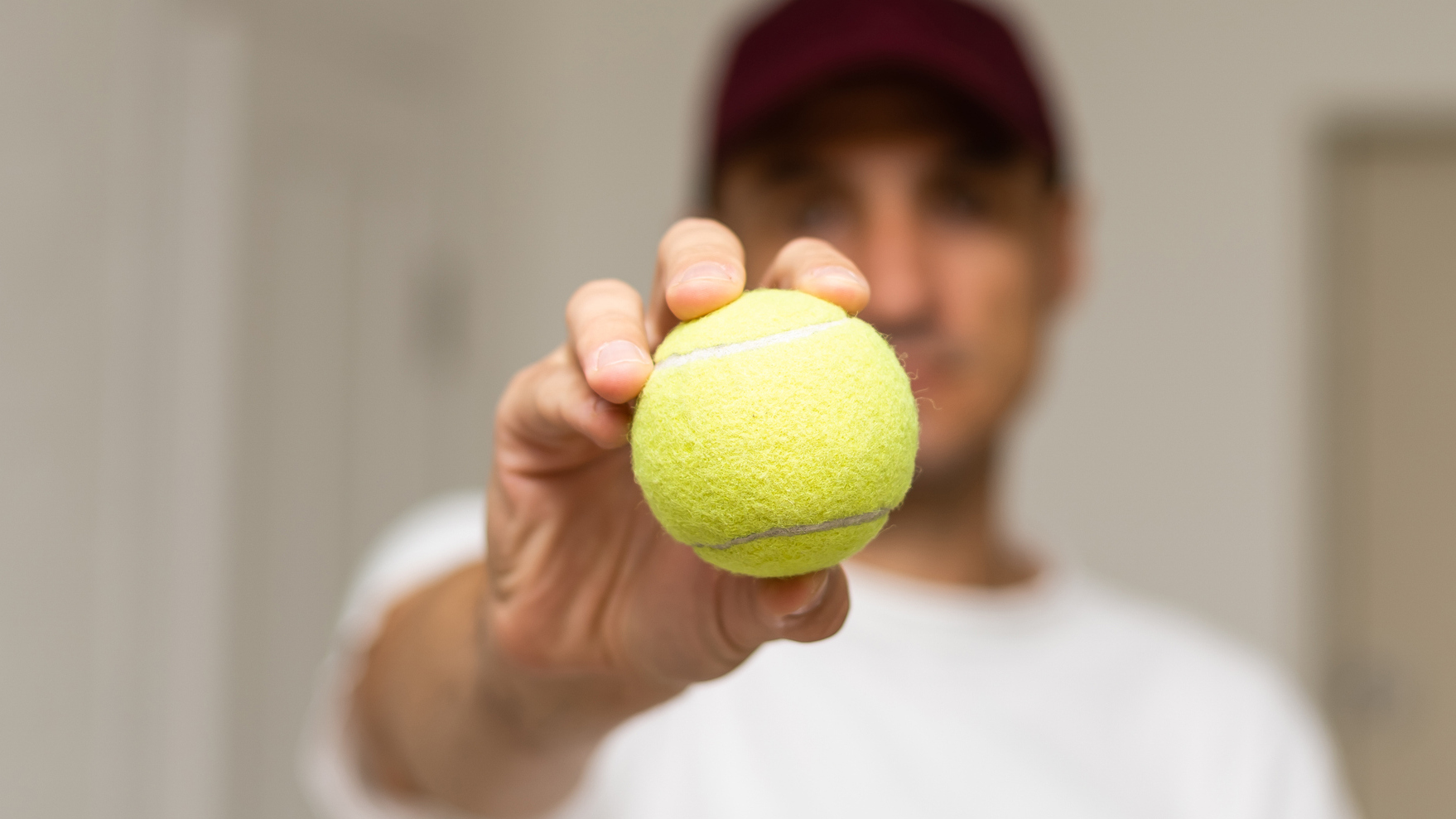Strengthen your back at home and fix poor posture with this trainer’s ingenious tennis ball routine
No weights required

Do you have some tennis balls lying around your home? Dig them out and you can use them to mobilize your upper back, strengthen these hard-to-train muscles and correct poor posture with this novel routine from Viktor Makarin, a creator who specializes in treating back pain.
The sequence involves lying face down and using the balls as reference points to manipulate the upper back and shoulder girdle, while activating all the muscles around the shoulder blades and spine that are often neglected or undertrained due to a sedentary lifestyle.
Its simplicity caught my eye initially. No heavy dumbbells required. No fiddly resistance bands.
Instead, the four-move routine draws on some basic Pilates postures and principles—such as light weights and high repetitions—to build a stronger, more resilient body.
Having used this routine for a week, I can vouch for its ability to wake up dormant muscles, address imbalances, and groove mobility around the shoulders and upper back that could have long-lasting benefits, whether working from home or working out in the gym.
Strengthen your back at home with this tennis ball routine
A post shared by Viktor Makarin (@makarin)
A photo posted by on
Makarin’s video is slightly sped up, so don’t try to match his pace.
Concentrate on the muscles and joints each exercise targets, and if restricted mobility limits your ability to complete one of the moves, move on to the next until you develop a better range of motion.
Start your week with achievable workout ideas, health tips and wellbeing advice in your inbox.
I suggest treating the four moves as a circuit, spending 20-30 seconds on each exercise, completing up to three rounds.
1. Behind-the-back ball pass
- Lie on your front with your forehead supported by a folded towel and your arms extended to the sides, holding a tennis ball in your right hand.
- Retract your shoulder blades to activate the upper-back muscles, then slowly move both arms clockwise to bring the ball in your hand toward your mid back, while arcing the other hand overhead.
- Bend both elbows to bring your hands as close as you can manage to each other in order to pass the ball from one hand to the other.
- Straighten your arms and move them counterclockwise to repeat the ball passing action in the other direction.
2. Ball release scapula arc
- Lie on your front with your forehead supported by a folded towel and your arms extended to the sides, holding tennis balls.
- Retract your shoulder blades and lift your arms off the floor, then move both arms 45° clockwise.
- Lower your arms to place the balls on the floor, release them, then lift your arms using your back muscles.
- Lower your arms again, pick up the balls and return to the start.
- Repeat the movement in the counterclockwise direction.
- As Makarin has annotated in his video, imagine there is a straight line running from one hand to the other. Maintain this straight line as you move your arms.
3. 90° ball bounce
This only requires a small action to target the stabilizing muscles in the upper back, but after 20-30 seconds, you'll certainly feel them working hard.
- Lie face down with your upper arms out to the side and your elbows bent at 90˚ while holding tennis balls.
- Retract your shoulder blades to activate your upper-back muscles and lift your arms.
- Bounce the tennis balls on the floor.
4. Dart shoulder 360s
This one’s more challenging, but it’ll target the erector spinae, lats and traps in one fell swoop so it’s worth persevering with.
- Lie face down, holding a tennis ball in one hand with arms extended in front of you.
- Pull your shoulder blades back and use your lower-back muscles to lift your chest off the floor while also lifting your feet.
- Maintaining this dart-like posture, sweep your arms back so your hands meet at the base of your spine.
- Pass the tennis ball from one hand to the other, then sweep your hands back to the start.
- Reverse the motion to pass the ball in the other direction and repeat.

Sam Rider is an experienced freelance journalist, specialising in health, fitness and wellness. He is also a REPS level 3 qualified personal trainer.
